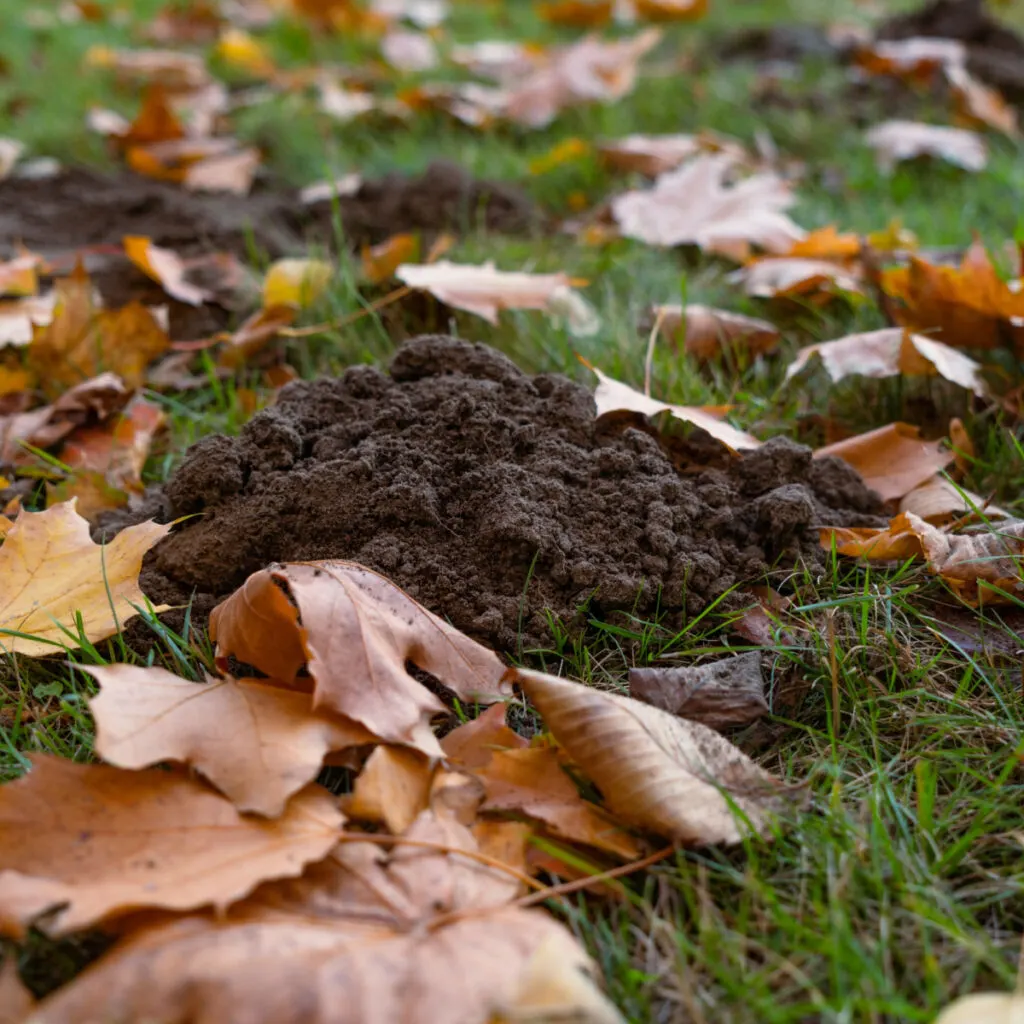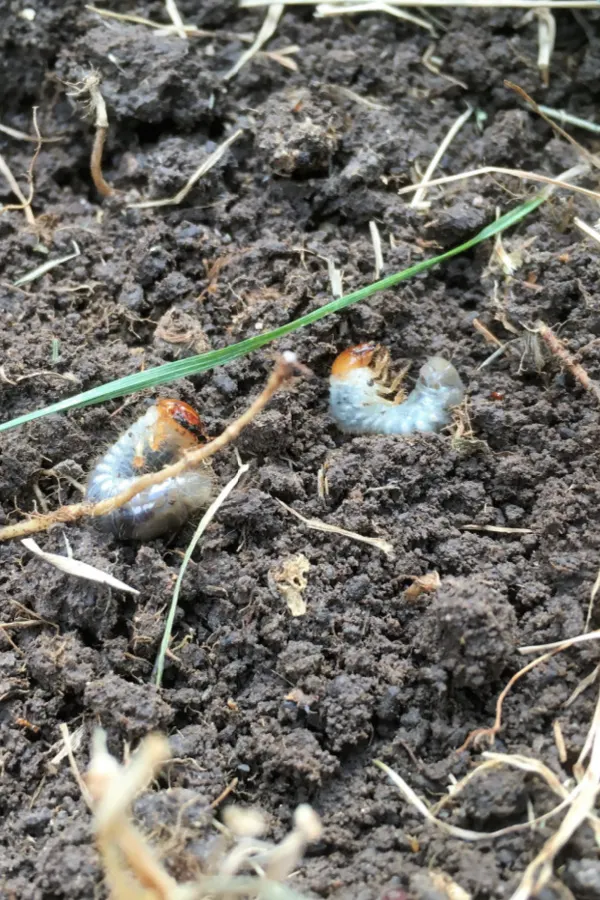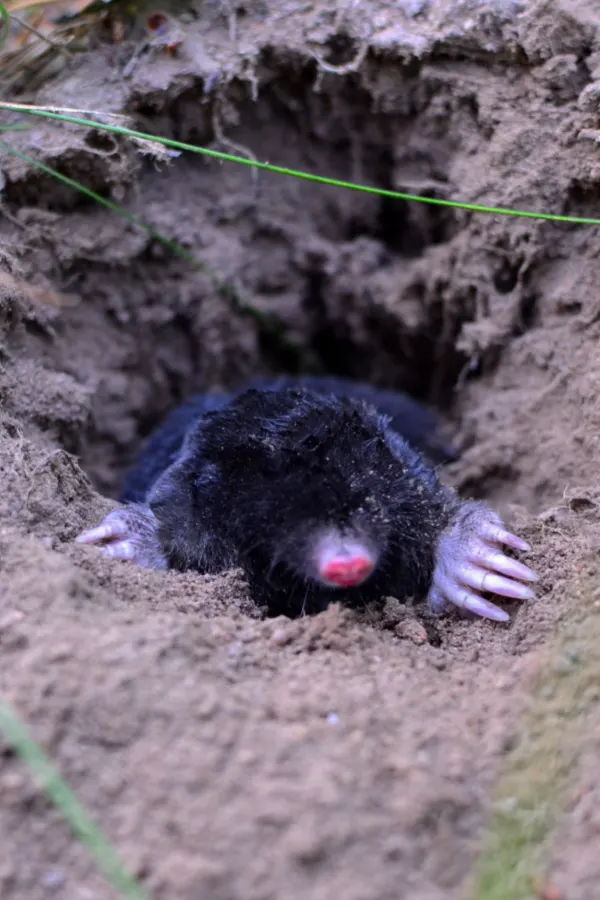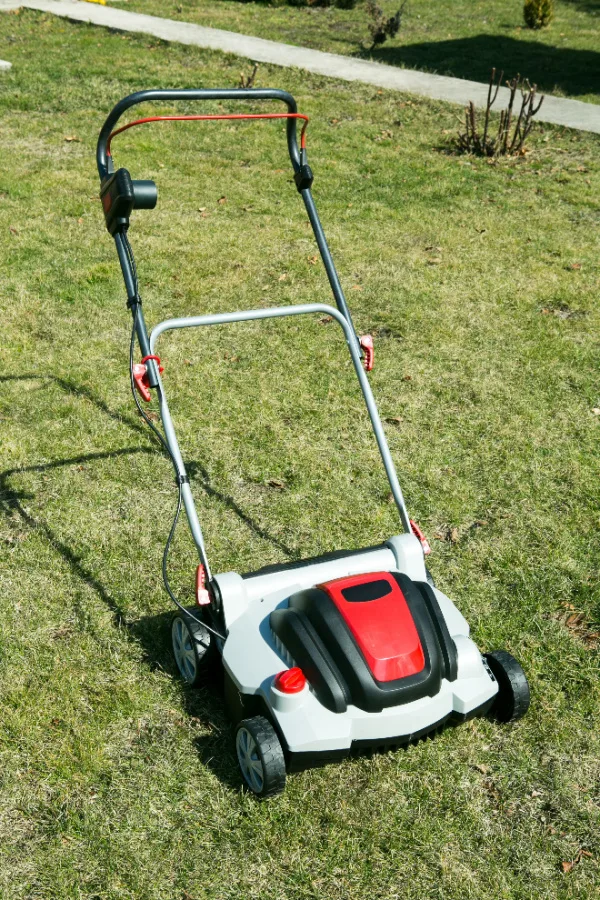Are you looking for a way to get rid of those pesky ground moles tearing up your yard and landscape this fall?
Ground moles can do some serious damage to lawns, flowerbeds and garden. And although they can be active anytime on the surface of the soil when not frozen, they are most active in the early spring and fall. That is because the cooler and more damp conditions make the soil easy to work and dig through.
Ground moles are in your lawn and landscape for one specific reason – to eat. And when it comes to what they eat, they are especially fond of grubs. In fact, with nearly 100 percent accuracy, if you have ground moles in your yard – you have grubs. And they love to eat those grubs all year round!

Grubs & Moles – How To Get Rid Of Ground Moles In The Fall
Unfortunately, when ground moles establish in the autumn months, they tend to stick around all winter long in the same location. As the soil freezes, ground moles don’t hibernate. Instead, they simply dig deeper in the soil. Not just to stay warm, but to continue finding their favorite meal – grubs!
During the spring, summer and early fall, grubs hang out near the surface. They do this so they can come out and live their adult life as beetles. They then mate and live to lay eggs that become the next set of grubs.
But in the wintertime, grubs move down low in the soil to avoid freezing – and the moles follow them down to continue eating. But as soon as the spring arrives and the soil thaws – the grubs and moles come back up near the surface. And the lawn and flowerbed damage resumes!
So how do you stop the cycle? You would think that the moles would eat all of the grubs and leave. But unfortunately, when grubs establish, they do so in large numbers. And because of that, there are just too many to wipe out – even for the hungry moles.

That, of course, makes it perfect for ground moles to live in perpetuity in your yard – unless you can break the cycle. And as it turns out, fall just happens to be a great time to do just that!
How To Get Rid Of Ground Moles In The Fall
Getting rid of moles before winter arrives really require a two part plan and approach. The first key is to drive the ground moles from your landscape by disrupting their feeding patterns.
This is actually quite easy to do in the fall because of the softer earth with just a few simple tasks. Even better, one of those two tasks also happen to help your lawn’s health immensely in the process. Talk about a win-win!
The second part of the plan is to begin to kill off the grubs and reduce the current and future availability of meals for the moles. After all, if you take away their food – they have no reason to stick around. Not now – or for next spring.
With those two tasks in mind – here is a look at how to eliminate moles from your yard this fall – and keep them gone next year!

Disrupting Mole’s Feeding Patterns – How To Get Rid Of Ground Moles In The Fall
Interfering with how moles eat in the fall is a short term solution to stopping tunneling, but it can be a big key to success in getting them out before they dig deep to hunker down. Even better, it can put a quick stop to damaging your lawn in the autumn.
The single best way to disrupt ground moles in your lawn in the fall is by aerating it. Not only can it send them packing – it also helps your lawn to be more healthy and robust. And to work against moles, a plug or spike aerator is best.
Aerating is the process of puncturing the soil below to create small channels. This opens up compressed soil to allow air, water, and nutrients to feed the roots of grass. But it also happens to disintegrate mole tunnels at the surface.
In addition, the noise and vibration of the aerating process is highly disturbing to moles. If there are two things moles hate – its vibrations and noise. And between flattening their feeding tunnels and creating a racket – it can send them packing for the short term. All the while helping your lawn become healthier.

Using Sound To Make Moles Move – How To Get Rid Of Ground Moles In The Fall
Another way to get moles to move out in the fall is with sound waves from solar repelling mole stakes. These solar powered stakes emit sonic pulses about every 30 seconds. These waves penetrate the soil and work to scare off the moles and other pests living in the ground.
They can actually help repel all kinds of unwanted pests in the lawn – from moles and gophers, to snakes, groundhogs, chipmunks and voles. Affiliate Product Link: Mole Repellent Solar Powered 4 Pack
Eliminating Grubs – How To Get Rid Of Ground Moles In The Fall
The second part of the equation in getting rid of moles in the fall is to eliminate the grubs they love to eat. For this, you need to act before the ground begins to freeze or cool. Remember that once the ground cools, both the grubs and moles go down deep in the soil during winter. And they will unfortunately stay there until spring returns.
This is why getting them out in the fall is so important. If you can eliminate a large majority in the autumn months, you can keep mole populations low and their return less likely. Even better, when spring rolls around, there are even more effective ways to eliminate grubs altogether to keep them out for good.

There are two great all-natural products that can work to kill grubs near the surface of the soil in the fall. One is Diatomaceous Earth, the other is plain old dish soap and water!
Using Diatomaceous Earth or Dish Soap To Kill Grubs
To use Diatomaceous Earth (DE) on grubs, you simply cover the lawn lightly using a spreader. The DE pierces the wax-like outer skin of grubs as it comes in contact with them, drying out their skin in the process. See: How To Use Diatomaceous Earth To Get Rid Of Pests.
To use dish soap to kill grubs, simply mix two tablespoons of liquid dish soap for every 1 quart of water. Then, put into a pump sprayer and spray your lawn. The dish soap suffocates the outer shell of the grubs, killing them in the process.
It is important to note that the later in the fall you use both of these remedies, the less effective they will be. But for the ones you don’t get – a spring application when they come back to the surface will finish the job!
Here is to driving out the ground moles from your landscape this fall – and to getting rid of ground moles for good!
Follow Our Facebook Page For Great Gardening Tips And Advice! This Is My Garden Facebook Page
This Is My Garden is a garden website created by gardeners, for gardeners. Jim and Mary Competti have been writing gardening, DIY and recipe articles and books and speaking for over 15 years from their 46 acre Ohio farm. They publish three articles every week, 52 weeks a year. Sign up today to follow via email, or follow along!
